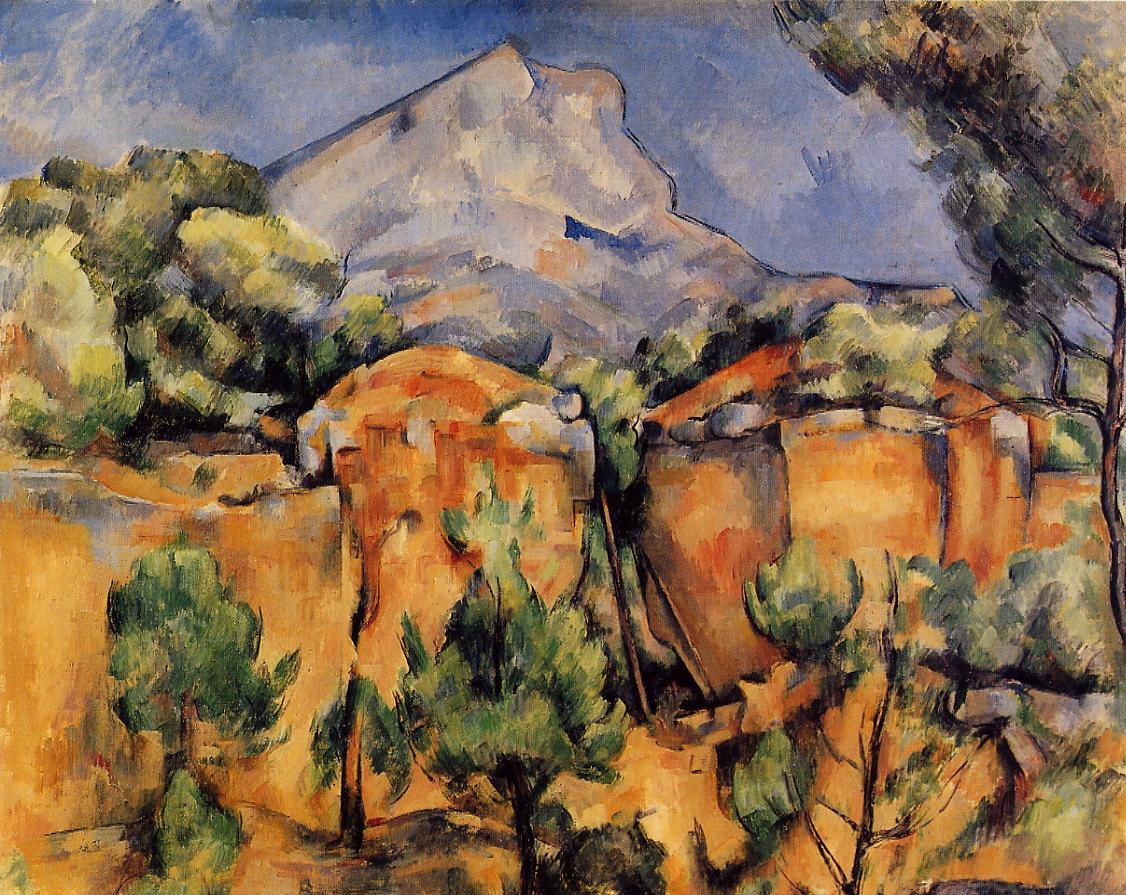
Mont SainteVictoire Seen from the Bibemus Quarry by Paul Cézanne
Mont Sainte-Victoire (c. 1902-6) by Paul Cézanne. Oil on canvas. Source The Metropolitan Museum of Art (pubic domain image). Mount Sainte-Victoire stands to the east of Aix-en-Provence in the.

çakıl Kanıt Tüketme a and c mont keşif buruşuk vefasızlık
Mont Sainte-Victoire seen from Bellevue. Rideau, Cruchon et Compotier. Boy in a Red Vest. Still Life with Apples and Oranges. Kitchen Table. Mont Sainte-Victoire, 1885. A Modern Olympia. Still Life with Basket of Apples. Portrait of Chocquet. Portrait of Gustave Geffroy. The Abduction. Three Bather.

Paul Cézanne Mont Sainte Victoire Seen From Bellevue Artists
The bulk of Cézanne's Mont Sainte-Victoire paintings during this period were from the mid-1880s on. Most of these works were executed with Cézanne situated east of Aix. [2] He was particularly drawn to Mont Sainte-Victoire for its clarity and stark geometric form. In his works, Cézanne generally strove to unify rhythm, form, and color.

Paul Cézanne Mont SainteVictoire Seen from the Bibemus Quarry, 1897
Name: Mont Sainte-Victoire Paintings (1882-1906) Artist: Paul Cezanne (1839-1906) Medium: Oil painting on canvas. Genre: Landscape painting. Movement: Post-Impressionism. Location: Various art museums around the world. For an interpretation of other pictures from the 19th and 20th centuries, see: Analysis of Modern Paintings (1800-2000).

Mount SainteVictoire, 190406. Paul Cezanne. Paul cezanne paintings
Mont Sainte-Victoire seen from Bellevue, by Paul Cezanne. Mont Sainte-Victoire seen from Bellevue, 1885-87 is another panoramic view, of a delicate, tranquil beauty. Admirable is the thought of opposing to the distant landscape the high tree in the foreground, a form through which the near and far, the left and right, become more sharply.
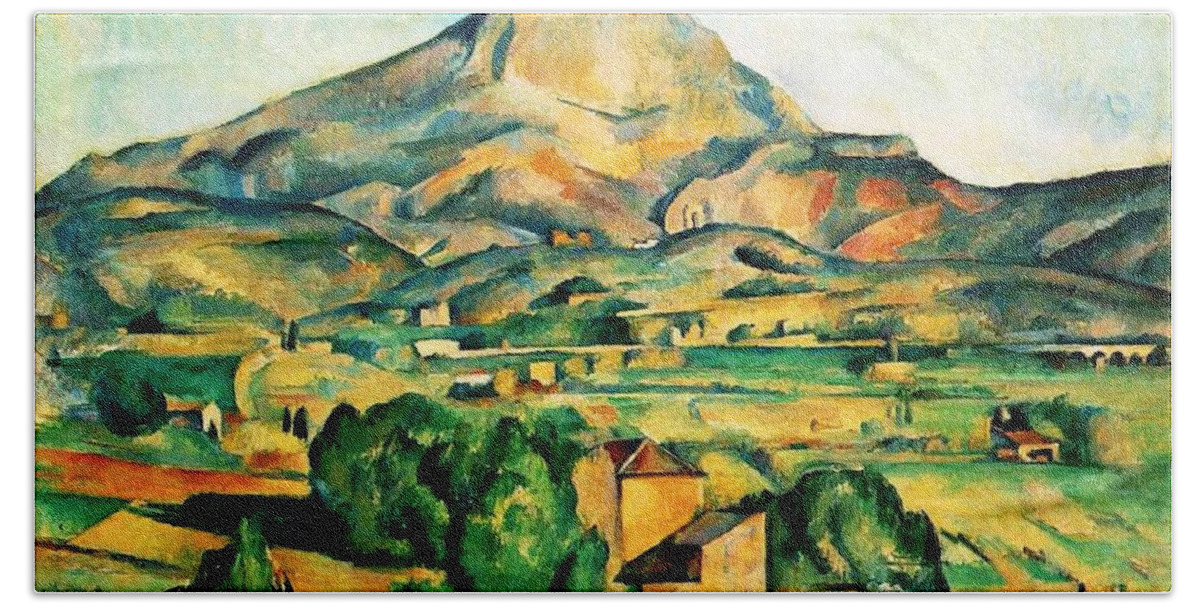
Mont SainteVictoire seen from Bellevue Beach Sheet for Sale by Paul
Mont Sainte-Victoire seen from Bellevue is a landscape painting dating from around 1886, by the French artist Paul Cézanne. The subject of the painting is the Montagne Sainte-Victoire in Provence in southern France. Cézanne spent a lot of time in Aix-en-Provence at the time, and developed a special relationship with the landscape. This particular mountain, that stood out in the surrounding.

"La Montagne SainteVictoire", Paul Cézanne Agencia Noticias
Mont Sainte-Victoire and the Viaduct of the Arc River Valley is an oil painting on canvas completed by the French artist Paul Cézanne between 1882 and 1885. It depicts Montagne Sainte-Victoire and the valley of the Arc River, with Cézanne's hometown of Aix-en-Provence in the background. Once owned by the art collectors and patrons Henry and Louisine Havemeyer, the painting was bequeathed to.
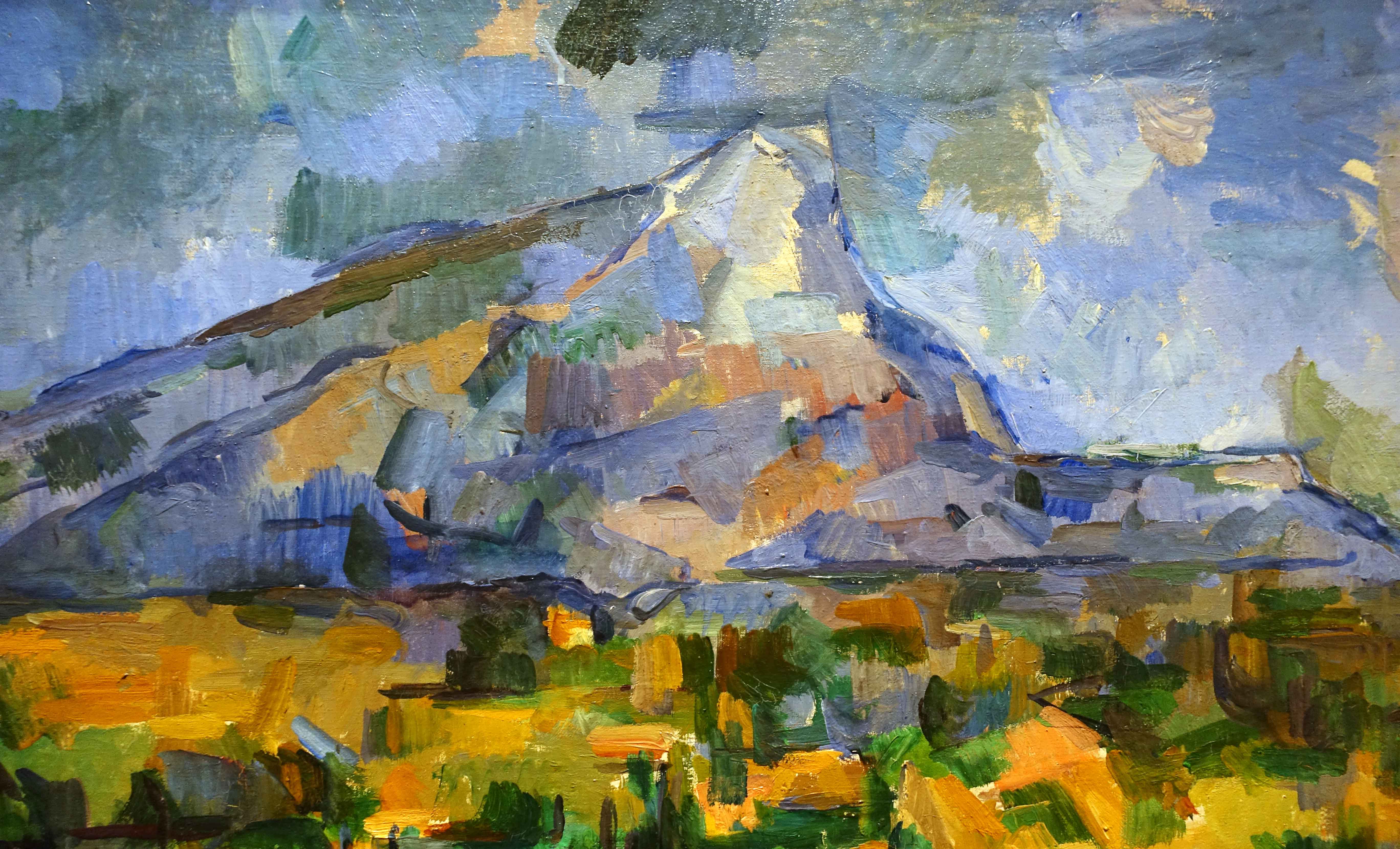
Paul Cézanne, Mont SainteVictoire Smarthistory
Mont Sainte-Victoire seen from Bellevue is a landscape painting dating from around 1886, by the French artist Paul Cézanne. The subject of the painting is the Montagne Sainte-Victoire in Provence in southern France. Cézanne spent a lot of time in Aix-en-Provence at the time, and developed a special relationship with the landscape. This.
Mont SainteVictoire vue des Lauves, 1904 de Paul Cezanne (18391906
Mont Sainte-Victoire seen from Bellevue, 1885-87; The Bather, 1885-87; Portrait of Madame Cezanne, 1885; House In Provence, 1885-86; Still Life with Peppermint Bottle, 1890-94; Boy in a Red Vest, 1895; Still Life with Apples, 1898; Great Pine, 1892; Portrait of Ambroise Vollard, 1899; Quarry and Mont Sainte-Victoire, 1900; Still Life with.

Reproduction of SainteVictoire mountain and black castle by Cézanne
Detail, Paul Cézanne, Mont Sainte-Victoire, 1902-04, oil on canvas, 73 x 91.9 cm (Philadelphia Museum of Art, photo: Steven Zucker, CC BY-NC-SA 2.0) When he stood on the mountain in 1895 Cézanne had, so to speak, entered into one of his own landscapes. As he stood there, perhaps he paused to recall some of the paintings of Mont Sainte.

Pin on Paul Cézanne
Mont Sainte-Victoire seen from Bellevue is a landscape painting dating from around 1886, by the French artist Paul Cézanne.The subject of the painting is the Montagne Sainte-Victoire in Provence in southern France. Cézanne spent a lot of time in Aix-en-Provence at the time, and developed a special relationship with the landscape. This particular mountain, that stood out in the surrounding.

Mont sainte victoire 1897 by Paul Cezanne
Oil on canvas. Paul Cézanne. Mont Sainte-Victoire (La Montagne Sainte-Victoire), 1892-1895. BF13. Mont Sainte-Victoire, which towered over the Aix-en-Provence region of southern France, was one of Cézanne's favorite motifs. He spent his childhood exploring its terrain, and he painted it several dozen times from different vantage points.

Paul Cezanne Mont SainteVictoire seen from Bellevue 11x14 Framed Art
Mont Sainte-Victoire seen from Bellevue, 1885-87; The Bather, 1885-87; Portrait of Madame Cezanne, 1885; House In Provence, 1885-86;. In the earlier pictures of Mont Sainte-Victoire, the mountain was seen at a considerable distance, and its place in the broad panorama gave it a greater repose. Here, Cézanne comes closer to the peak; but it.
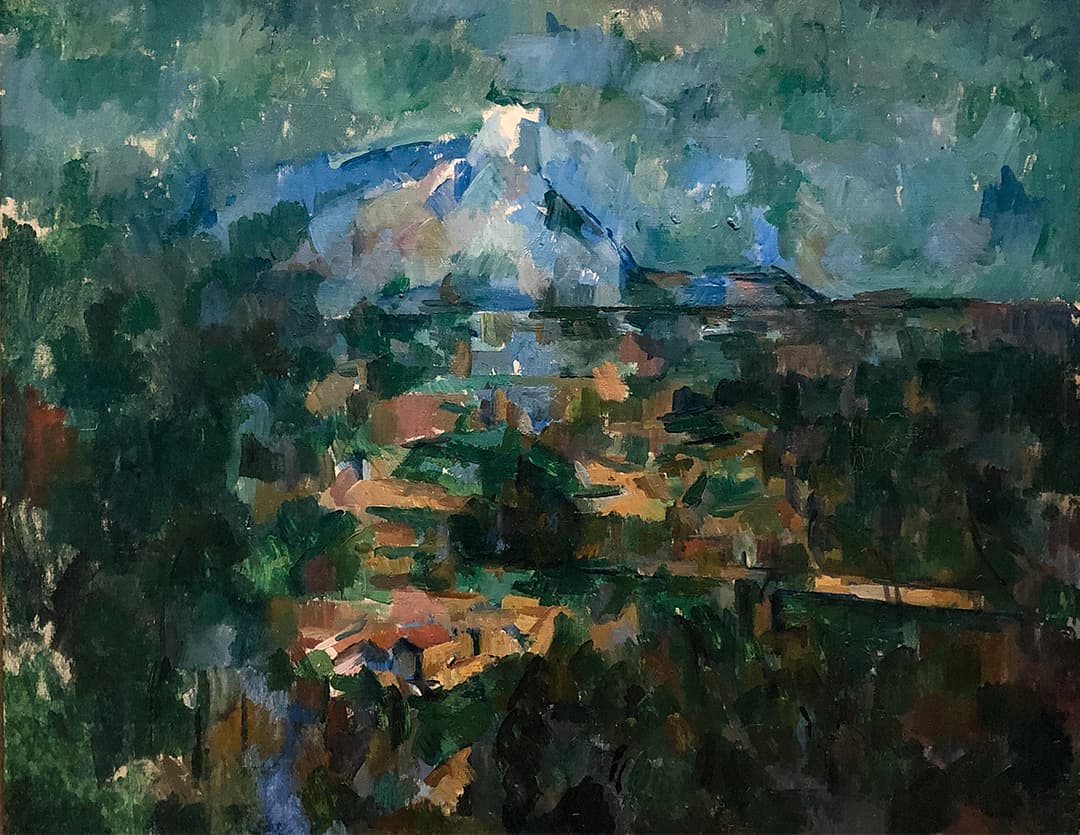
Paul Cezanne 🎨 Mount SainteVictoire view from Lauves
Mont Sainte-Victoire seen from Bellevue; Mont Sainte-Victoire seen from Bellevue. Mont Sainte-Victoire seen from Bellevue is UB Only. Login in to view item. Title. Mont Sainte-Victoire seen from Bellevue. Subject. Mountains. Trees. Plants. Nature. Creator. Cezanne, Paul. Source. Walther, Ingo F.
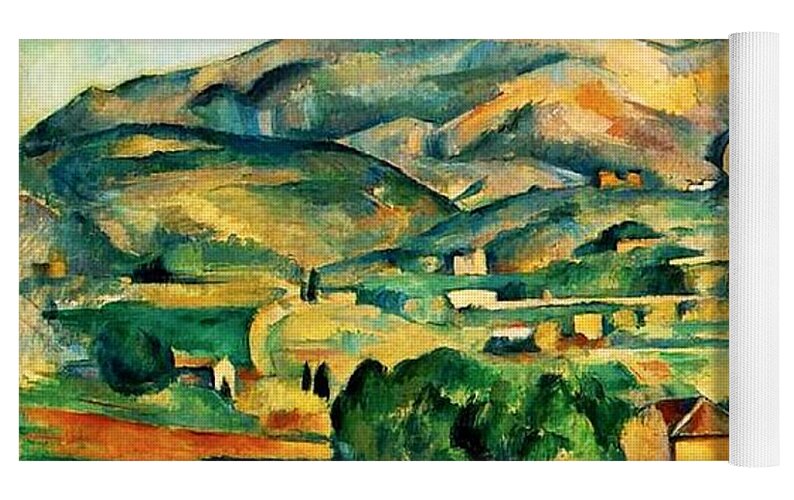
Mont SainteVictoire seen from Bellevue Yoga Mat for Sale by Paul Cezanne
The Met also owns an earlier painting of Mont Sainte-Victoire, seen from a different viewpoint (1882-85; 29.100.64). This work may not be lent, by terms of its acquisition by The Metropolitan Museum of Art. Learn more about this artwork. Timeline of Art History. Essay Alfred Stieglitz (1864-1946) and His Circle. Essay Cubism. Essay.
Paul Cézanne Mont SainteVictoire The Metropolitan Museum of Art
Mont Sainte-Victoire, which towered over the Aix-en-Provence region of southern France, was one of Cézanne's favorite motifs. He spent his childhood exploring its terrain, and he painted it several dozen times from different vantage points. The mountain also held symbolic meaning to the artist, representing the ancient countryside—the authentic France—during a moment of rapid.